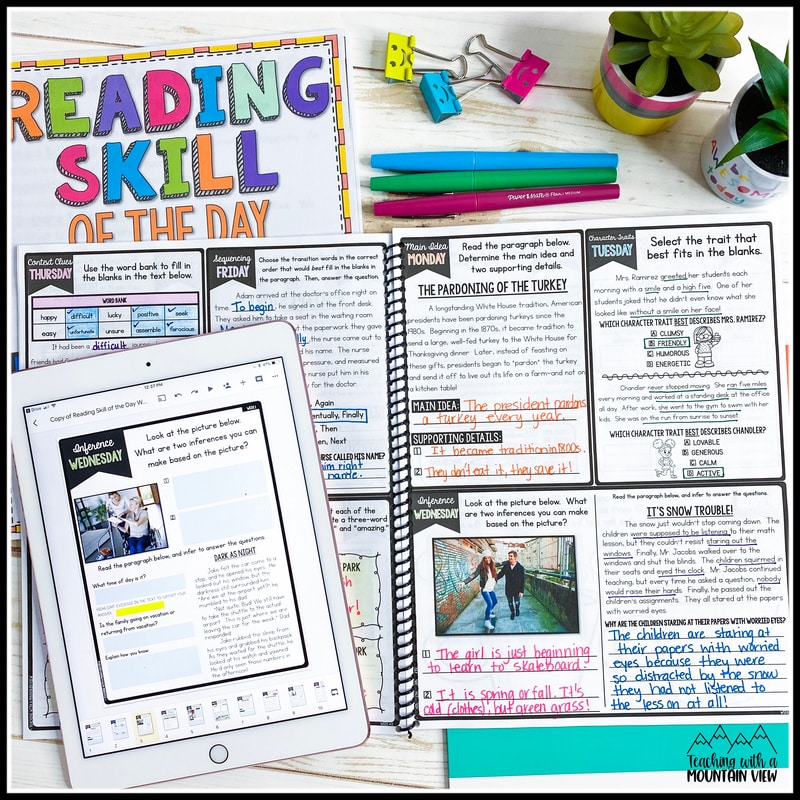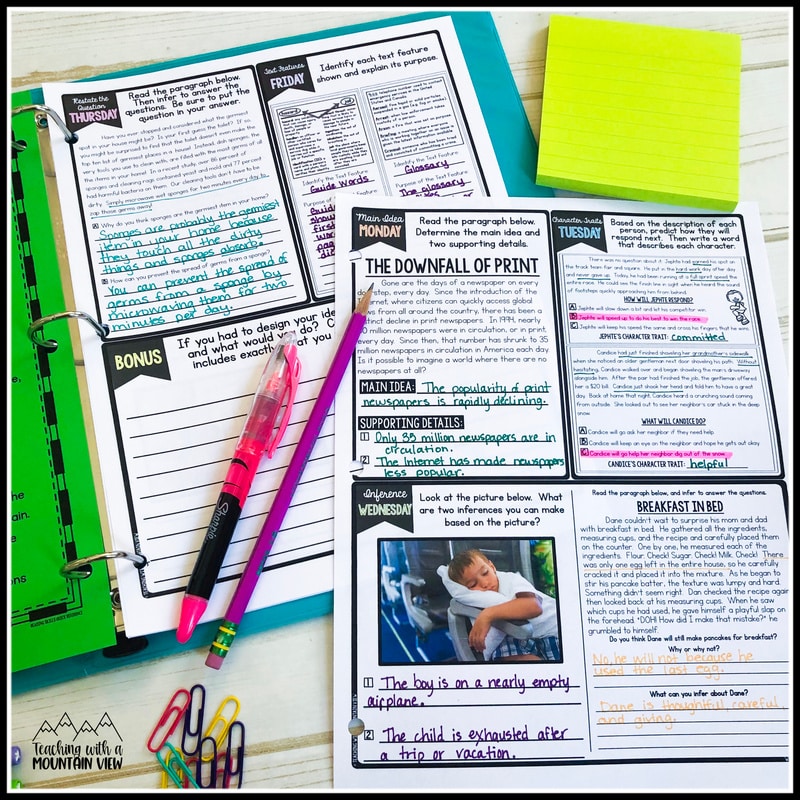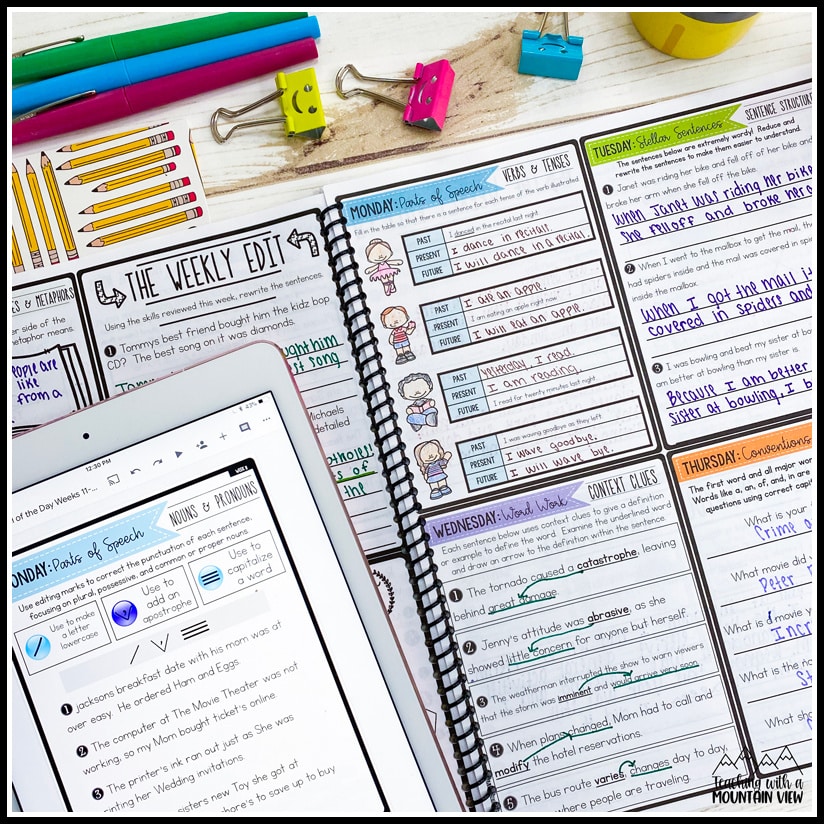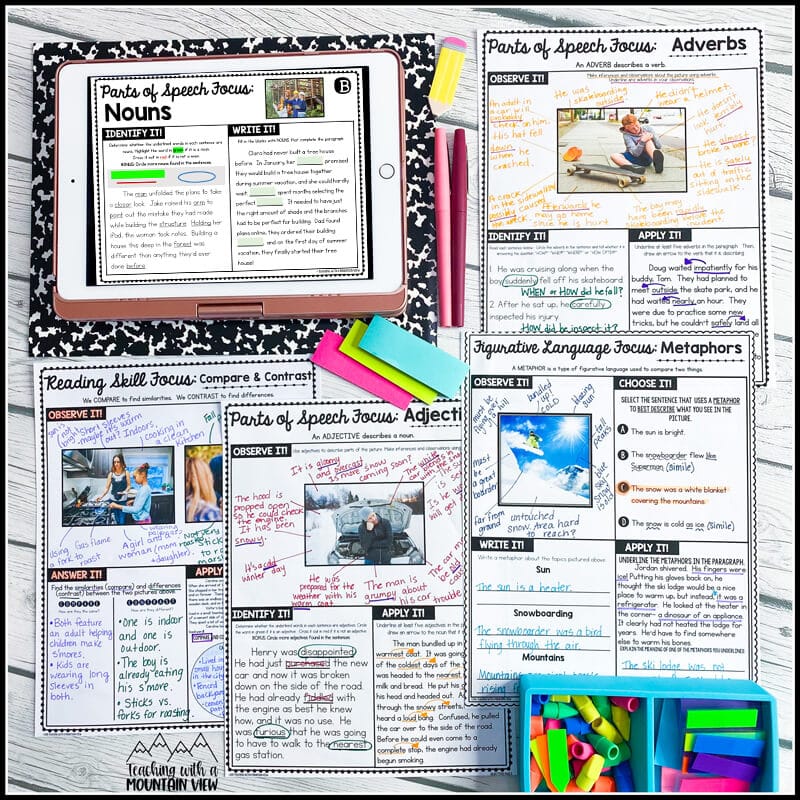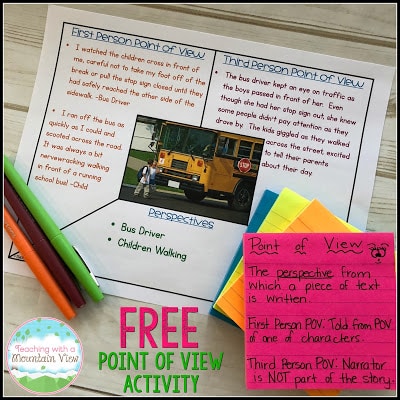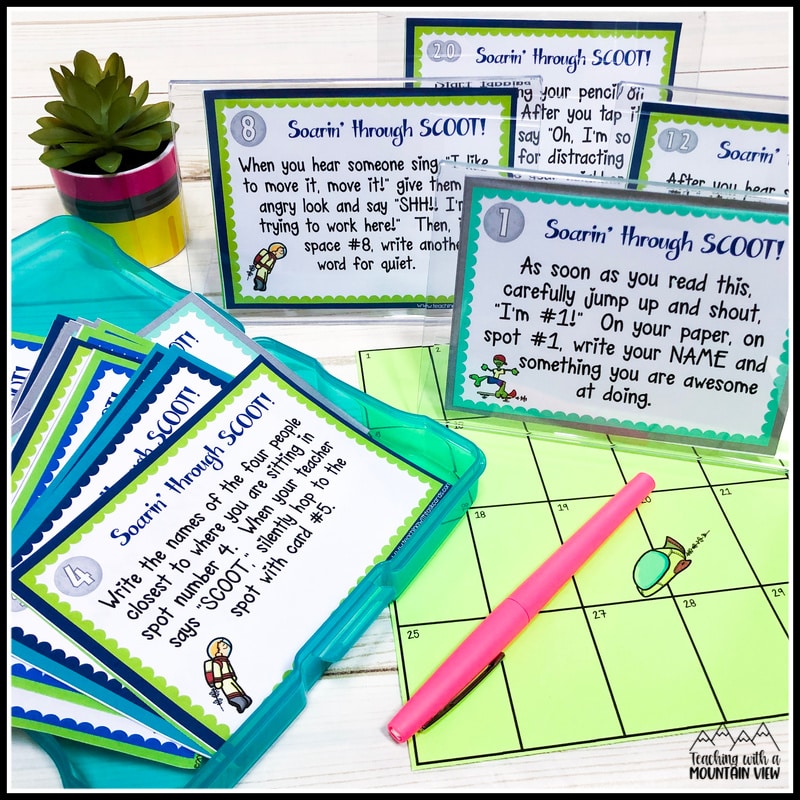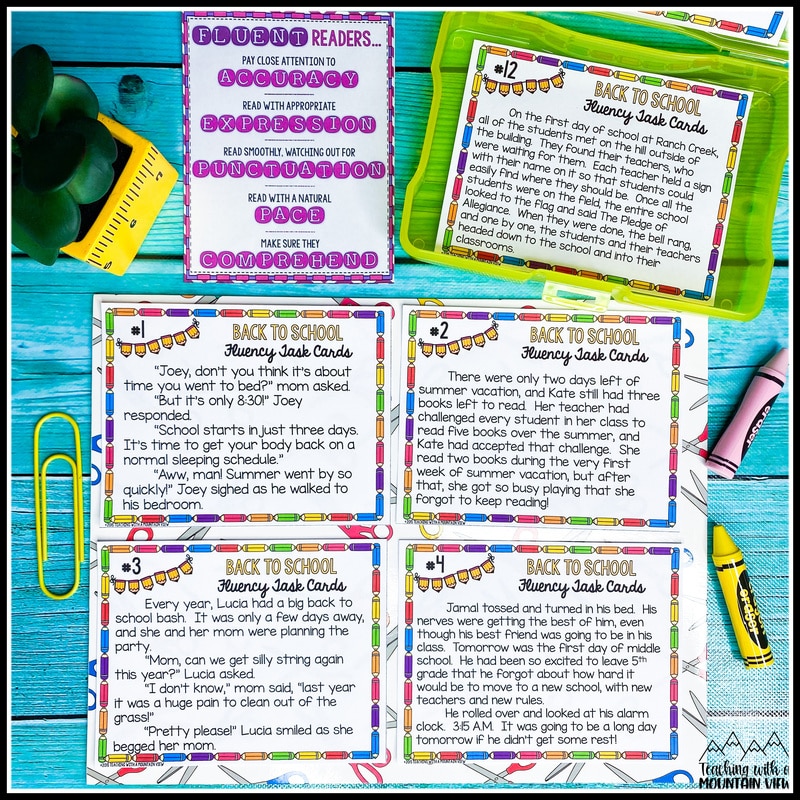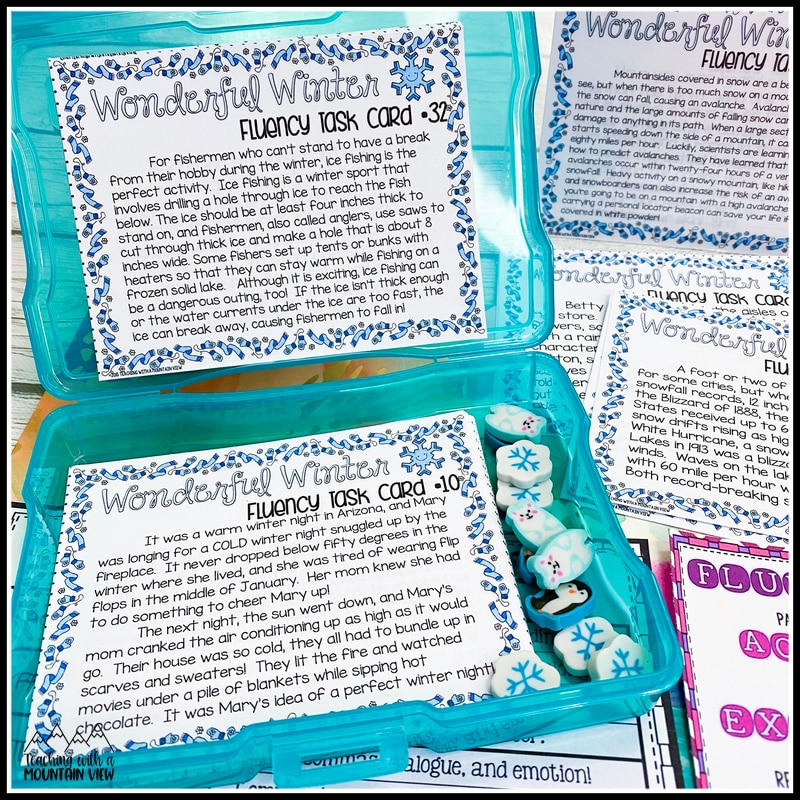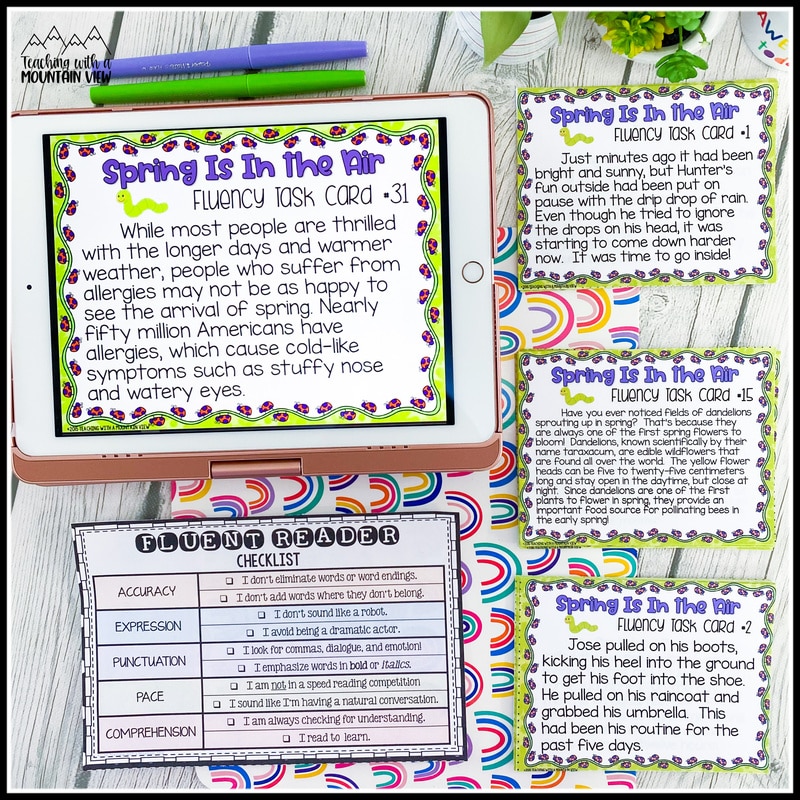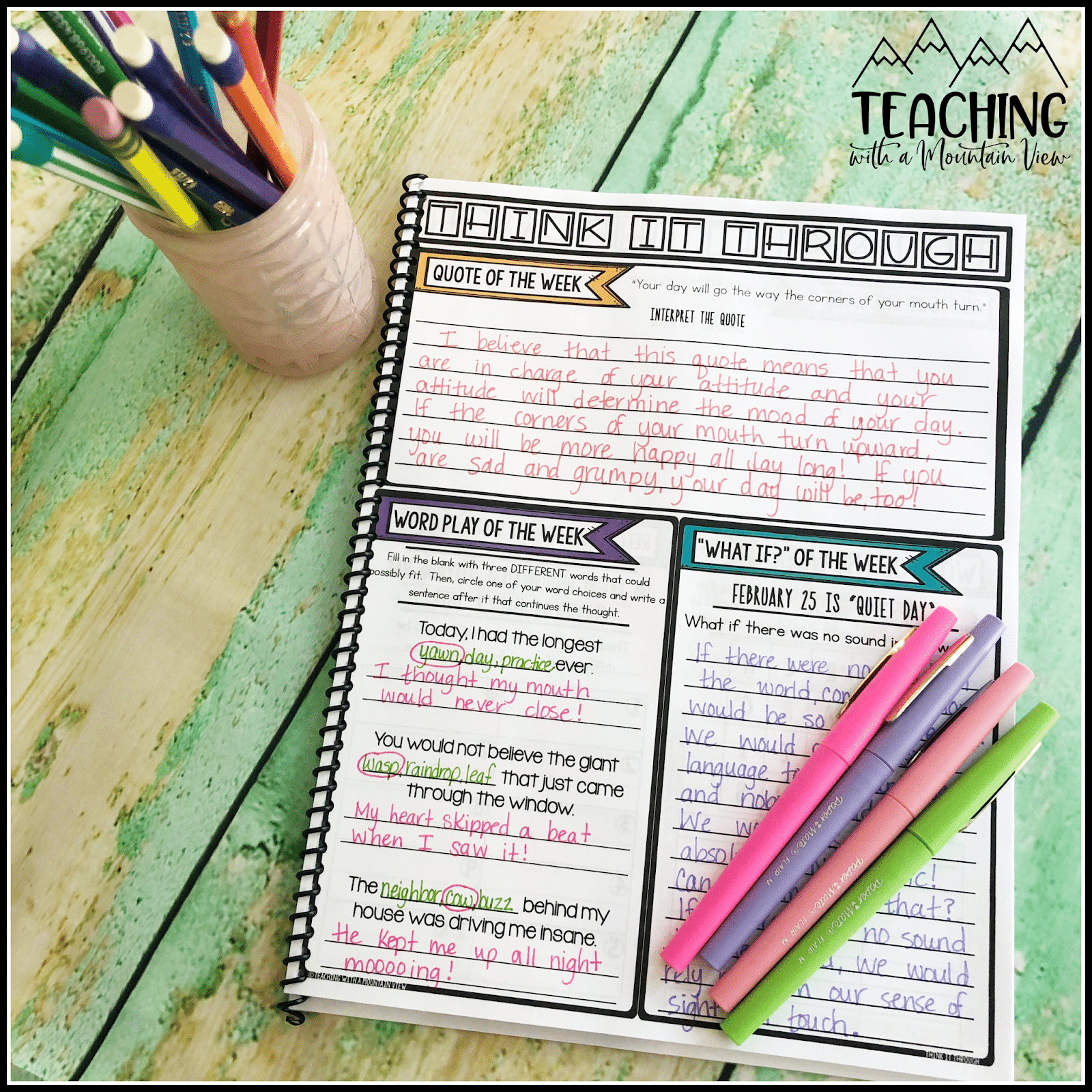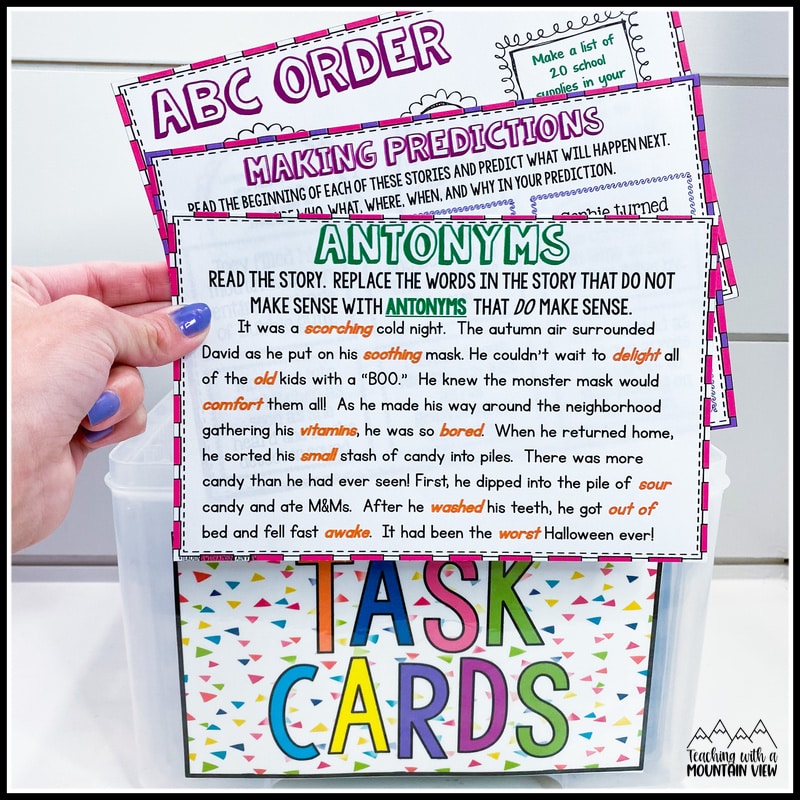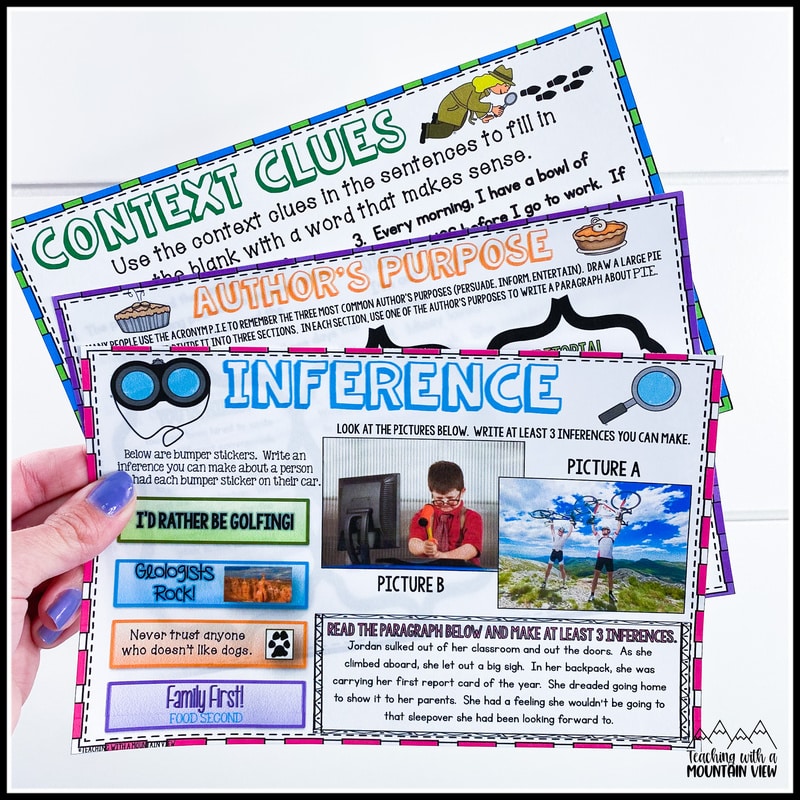How I Organize My Literacy Block
I LOVE hearing from other teachers, and one of the most frequently asked questions I get is, “How do you set up your math or literacy block?” A couple of months ago, I wrote all about how I set up my Math Workshop, and today, I’m chatting about how I structure and organize literacy instruction in my classroom. Structuring your literacy block is critical to making the most of your time together. Not only are we focusing on reading and writing skills during our literacy time, but we should also be growing our students’ content knowledge, confidence as readers, and encouraging a love of reading.
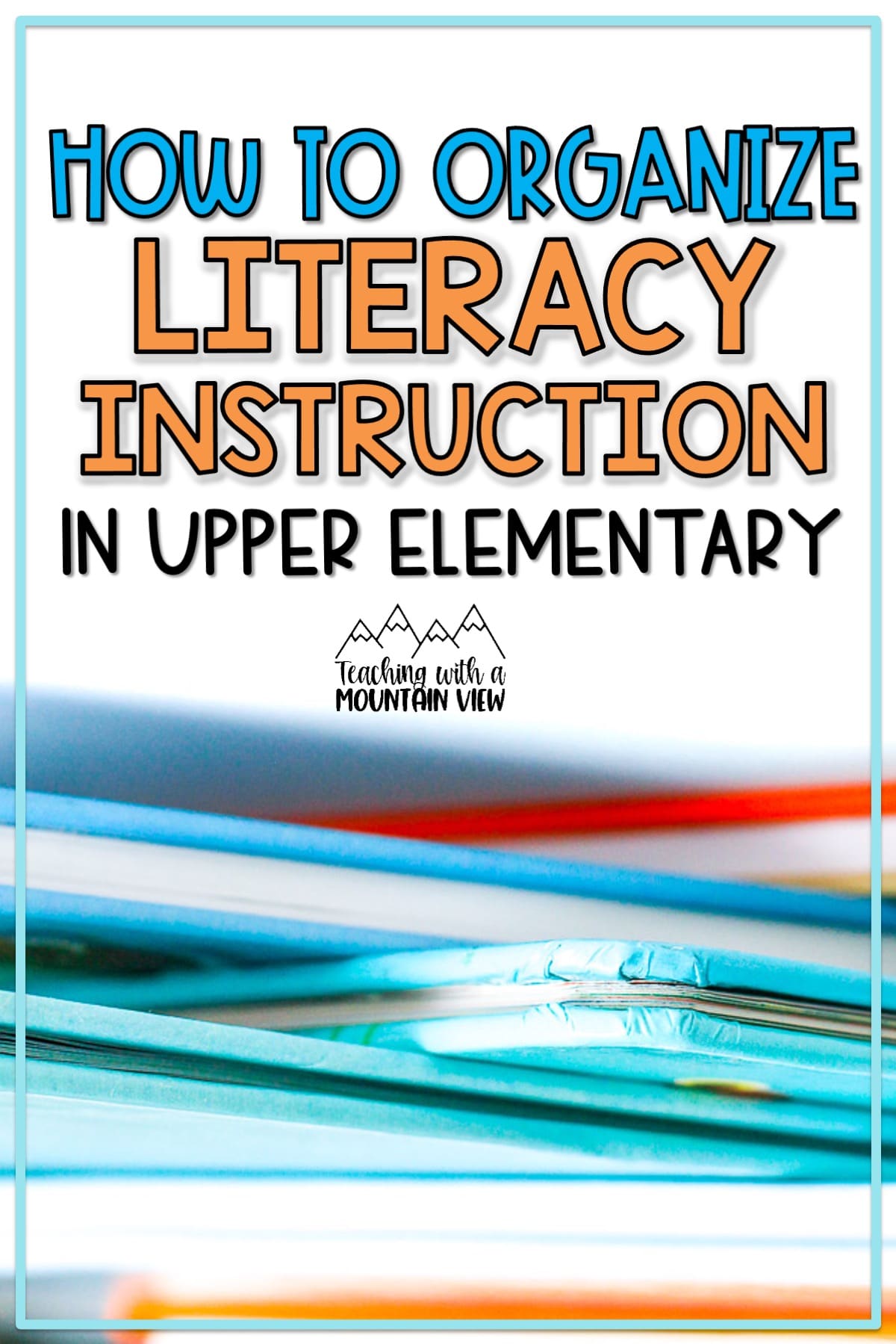
For the purpose of this post, I’ll be writing about setting up and organizing literacy rotations in a regular core classroom. Toward the end of the post, I’ll address providing enrichment and early finisher options to students and how you can do that in your classroom.
Most modern classrooms devote an enormous amount of time to literacy instruction. In my schools, I’ve had an average of 120 minutes per day to devote to language arts (writing, grammar, spelling, etc.) and reading. I’ve used a variety of different curriculum resources, but I’ll be very honest and say I’ve never been required to use a basal reader program with fidelity. That has been both a blessing and a curse — many hours have been spent planning and creating and cross-referencing standards and skills (HERE is the order in which I usually teach skills), but I have also seen my students show amazing growth using the format I’m discussing below. In order to best differentiate my instruction and meet the varying needs of all of my students while still hitting the MANY standards and skills required, I implement a reading rotation schedule most days.
Below, I’m going to chat about all the different types of rotations that we rotate through. Keep in mind, though, that my rotations are not the same every day or week. Some weeks, we might only have three or four of the rotations I discuss. Others, we might have 5 or 6 shorter rotations. Some weeks when we have big projects we can work on whole group, we won't run rotations at all. All that to say… Be fluid in your planning and know that it's totally okay if you don't follow the same model every single day!
This post has a TON of links to various resources and blog posts. Be sure to bookmark this post so that you can always come back to it!
A few notes on literacy block rotations…
On Basals: I know it can be challenging to incorporate much outside of the required basals, but there are often ways you can incorporate novels, word study, and grammar skills outside of your basal time OR use the required basal work as part of your reading rotations. This all depends on your school’s specific requirements. If you’re required to use a basal, supplement and enrich where you can and know that you are doing an amazing job, no matter what!
On Daily 5: I used Daily 5 and CAFE Strategies for several years, went to multiple trainings by The Sisters, and had the most beautiful pensieve you've ever seen. While I loved parts of it, over the years, my teammates and I adapted it to meet the needs of our students, so this is a VERY loose adaptation of Daily 5 rotations. VERY. LOOSE. I include several parts of it, but you will see that I don’t stick to the Daily 5 schedule by any means.
On Differentiation: Keep in mind that one of the core purposes of doing reading rotations is so that you can effectively reach the needs of many different learners. I have been in and heard of many classrooms where everyone is doing the exact same thing at every rotation. That’s absolutely okay somedays, but it is much more impactful if you are able to differentiate, in some way, what students are doing. If your students are doing the same exact thing in each rotation and small group time with you, you can just do all of the activities in succession as a whole class.
On Technology: I DO use technology in my literacy rotations, but I try to limit it to only one rotation (~20 minutes), and we spend a lot of time at the beginning of the year making sure we know how to access it immediately. There isn’t much worse than wasting the first 5 minutes of a rotation trying to get logged in. That is 25 minutes of reading they lose out on per week!
On Transitions and Management: This is a HUGE component of literacy rotations. Spend time upfront setting the expectations for QUICK transitions (HERE is a tip I have for expediting them!) and rotation expectations. If I know we are going to do a lot of similar activities all year (task cards, Topple blocks, games, Epic Kids, IXL, etc.) then we spend time at the beginning of the year explicitly practicing (not just talking about…PRACTICING) exactly HOW we act during those rotations. We make anchor charts with expectations, and we consistently reinforce them. Make sure you have three designated signals: 1) For when you need to get students' attention during a rotation 2) For when it's time to clean up and rotate to the next rotations and 3) For when it's time to clean up after the last rotation.
On Brain Breaks: 120 minutes is a LONG time for little ones to stay focused on serious skill and content work! Pay close attention to the order in which your rotations play out. Avoid putting two independent work times next to each other, and don’t underestimate the engagement and educational value of games and partner work when done well. It’s all about setting the expectations from the very beginning! I also incorporate a brain break (or recess, if the schedule allows) halfway through our rotations. This can be simple exercises in the classroom, a short GoNoodle video, or two minutes of “free” time to stretch, get water, chat, etc.
On Grouping: My groups are totally fluid. This means that it is not unusual for students to move from one group to another throughout the year or based on the skills or books we are reading.
Daily Literacy Routines
To begin, I have several routines that I consider to be a critical part of my students’ foundational success in literacy. You may find that you can do all of these during your literacy block, but I have also fit them in as morning/seat work when students arrive, then we spend part of our literacy block reviewing the content.
- Reading Skill of the Day: This is a non-negotiable for me! I created it because I felt like every other daily reading review focused on so many skills at a time, and I wanted to be able to do one great review of a skill per day. Reading Skill of the Day does exactly that, with a spiral review component, and it makes SUCH a big difference for my students! They are exposed to skills in a wide variety of formats, they are quick tasks and super approachable for students.
- Language Skill of the Day: This is my other non-negotiable, just with language skills! Again, I saw huge gains using this resource every day and reviewing one major language skill each day.
- Mentor Sentences: I am a MEGA fan of mentor sentences by Jessica Ivey! They not only improve my students’ grammar skills, but their writing skills as well. We take about 10 minutes per day to go through the mentor sentences routine at the beginning of our literacy block. I usually do this every other week, but if at all possible, I would totally suggest trying to fit it in every week! If you don't want to take 10 minutes each day, you can dissect the sentence together Monday and make the other parts (imitating, revising, etc.) part of their writing rotation. If you've never tried mentor sentences, I can't recommend them enough!
Whole Group Literacy Lessons
In an ideal world, I set up my routines so that I am teaching a 20ish minute whole group skill-focused lesson on Monday and possibly Tuesday, with the rest of the week devoted to novel studies, content and skill practice, and small group, differentiated work in rotations.
Here are some of the activities we do during whole group lessons to introduce new skills and concepts. This is just a sampling. I have a TON of lessons on my blog that show how I introduce skills:
- Anchor Charts and Interactive Notebooks
- Using Pictures to Teach (I use this to introduce most reading skills. You can learn more about Using Pictures to teach HERE.)
- Picture Book Read Alouds (HERE is a whole post about incorporating picture books into your classroom, including which skills they support.)
- Collaborative Activities (like THIS point of view activity, carousel activities, SCOOT, etc.)
Note: Although I do include a writing rotation in many of my literacy rotations, I typically teach writing during a separate 30-40+ minute block each day and therefore won’t focus on it during this post.
Small-Group Literacy Rotations
After I’ve introduced the skill we are focusing on for the week, we usually break off into rotations. I don’t always include ALL of these rotations every week depending on what unit we are working on, and they are listed in no particular order, but these are the small groups I include throughout the school year. Like I mentioned before, don’t be afraid to switch it up, and consider how you arrange the rotations for student engagement.
One tip… When I first started with rotations, I felt like I had to have every student do every rotation every day. That’s SO not true! There are some weeks where we have six rotations, but each child only goes to them twice (that means we do three rotations a day). Some weeks it’s the opposite. Some weeks we are doing whole-group projects, and we only do rotations once or twice that week. Routine is good, but don’t feel like you HAVE to get through all of the rotations every day. Sometimes, Fridays act as “finish up” day where we complete any unfinished reading rotation tasks, and I have individual reading and writing conferences with students. Flexibility is key.
Also, find an organizational system that works for you! I have managed my literacy rotations several ways, but my favorite is to put my students’ names on magnets for flexible grouping, and then place each of the following stations on cardstock, laminate, and put magnets on the back. Then I just put up which stations we are working on that day/week, put student names next to the rotation they are starting with, and teach them how to read the board so that they know how to move throughout the rotations.
Station #1: Meet with Teacher
During this time, I meet with individual groups. This is the perfect time to differentiate each group to make sure you are providing support for struggling readers and enrichment opportunities for others who need more depth and complexity. Some strategies/activities I use during small groups include:
- Guided Reading – This needs an entire post (or seven) devoted to it, but most teachers are familiar with this concept!
- Content Connections – This is a great time to integrate science and social studies into your literacy rotation. Make it a point to do close reads on content-specific topics with informational texts. You can use this time to introduce content-specific vocabulary skills that students will need at other times during the day.
- Novel Study Check-Ins – When we are running novel studies during rotations, I ALWAYS take at least one day a week to meet with groups and check in on their progress, facilitate discussions, and connect their novel to the skills we are working on.
- Skill-based practice – I use a LOT of half-page task cards, reading flipbooks, and rapid read and review tasks during this time together, particularly if we are working on skill-building. We learn annotation skills during this time, I’m able to hear their fluent reading, and hone in on specific skills students need to master. If you use an assessment like NWEA MAP, this is a GREAT time to address skill gaps and group students with specific learning goals.
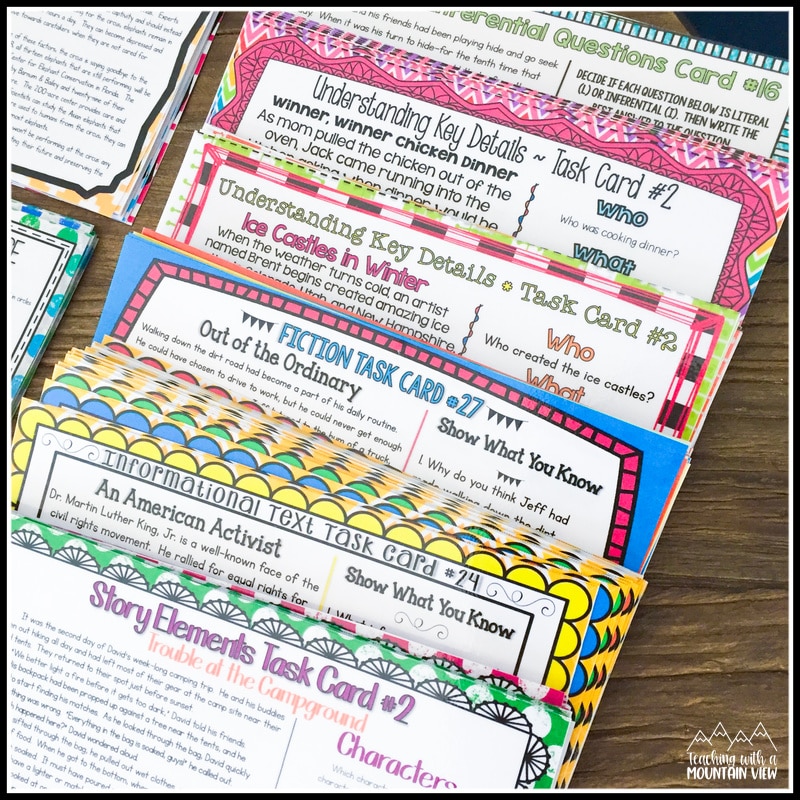
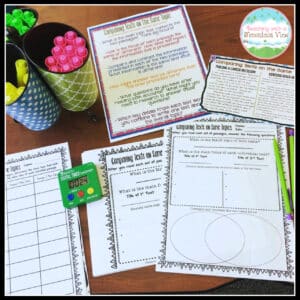
Station #2: Fluency
I have talked extensively about how important it is to include fluency practice and instruction in classrooms, even in upper grades. Be sure you start HERE with teaching and introducing fluency skills and see HERE for even more tips on incorporating fluency practice into your routines. Here are some fluency activities I use during rotations. I make sure to include this as part of my rotations at least three days per week:
- Fluency Task Cards: I created Fluency Task Cards as an approachable, fun way for students to intentionally practice their fluency skills. I usually have them work with a partner during this time, each reading their card at least three times and tracking progress. Sometimes, I'll have students work on these for the first 6 minutes of their rotation, and then move on to one of the other fluency options for the rest of the rotation.
- Superspeed 1000: I LOVE Superspeed! This one focuses on the 1000 sight words all kids should know and be able to read. This can get a little bit loud, so set the ground rules up front, but it’s AMAZING (and free!).
- Partner Plays: I get my partner plays from all over the place, but students love these, and there are many available that you can connect to your content or unit of study!
- Novel Study: This isn't always ideal, but if we are falling behind on reading our novels, I will often have them read their novels aloud (with a partner, as a group, or recording themselves, depending on their needs and preferences) during this rotation.
- You Read to Me I’ll Read to You: These are one of THE BEST investments for partner practice reading fluency! Students work in partners, tkaing turns reading each part and absolutely love them. HERE is an Amazon affiliate link to my favorite fluency picture books, including these gems.
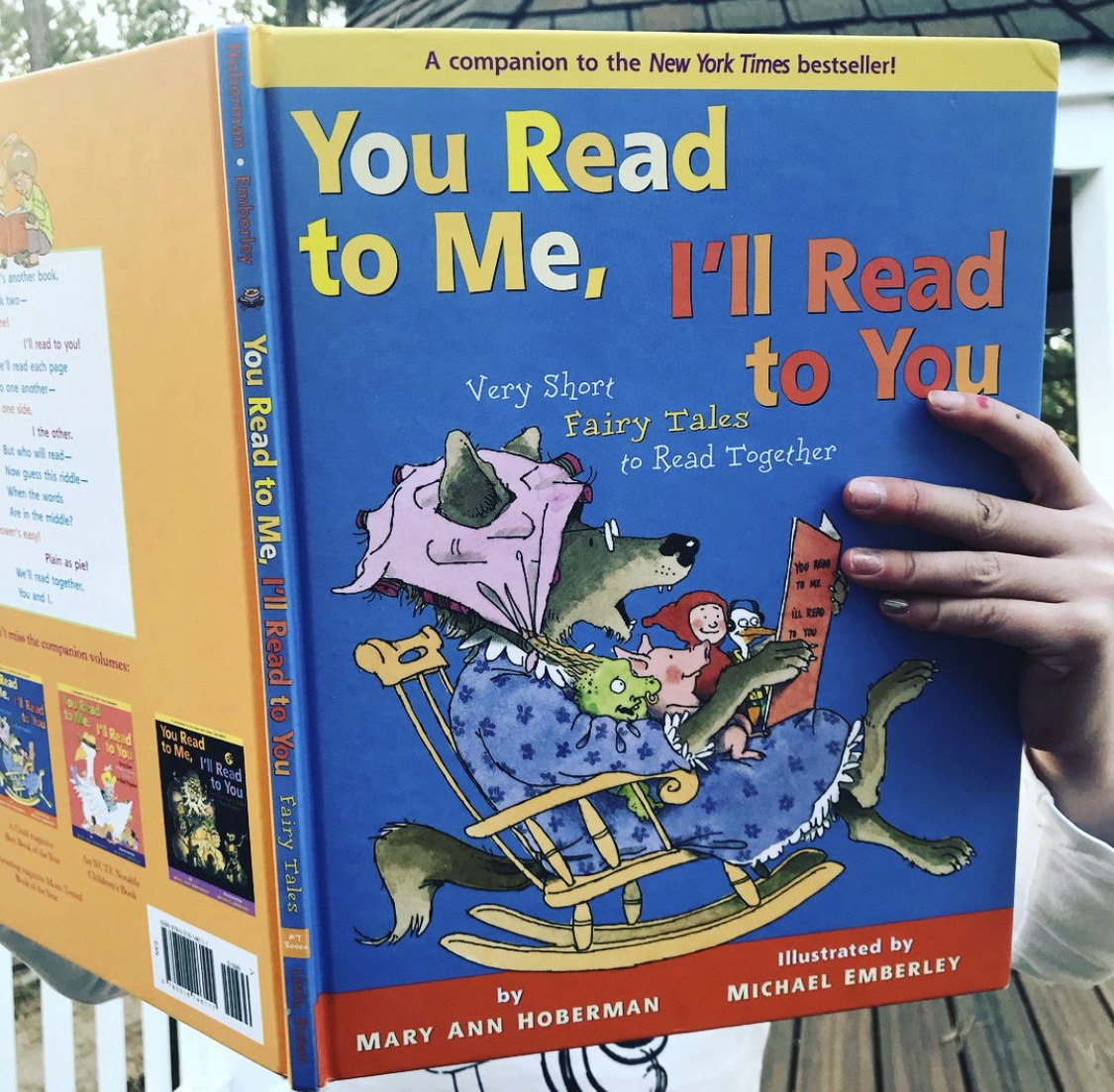
Station #3: Independent Work or Games
Sometimes this actually makes up several stations, depending on what we are working on. Here are some independent work and game resources I use throughout the year:
- Task Cards: There is so much you can do with task cards! You can let students solve them while playing board games, hang them up in the hallway for a scavenger hunt, or even make entirely new activities out of them like I did with my text structure task cards pictured below.
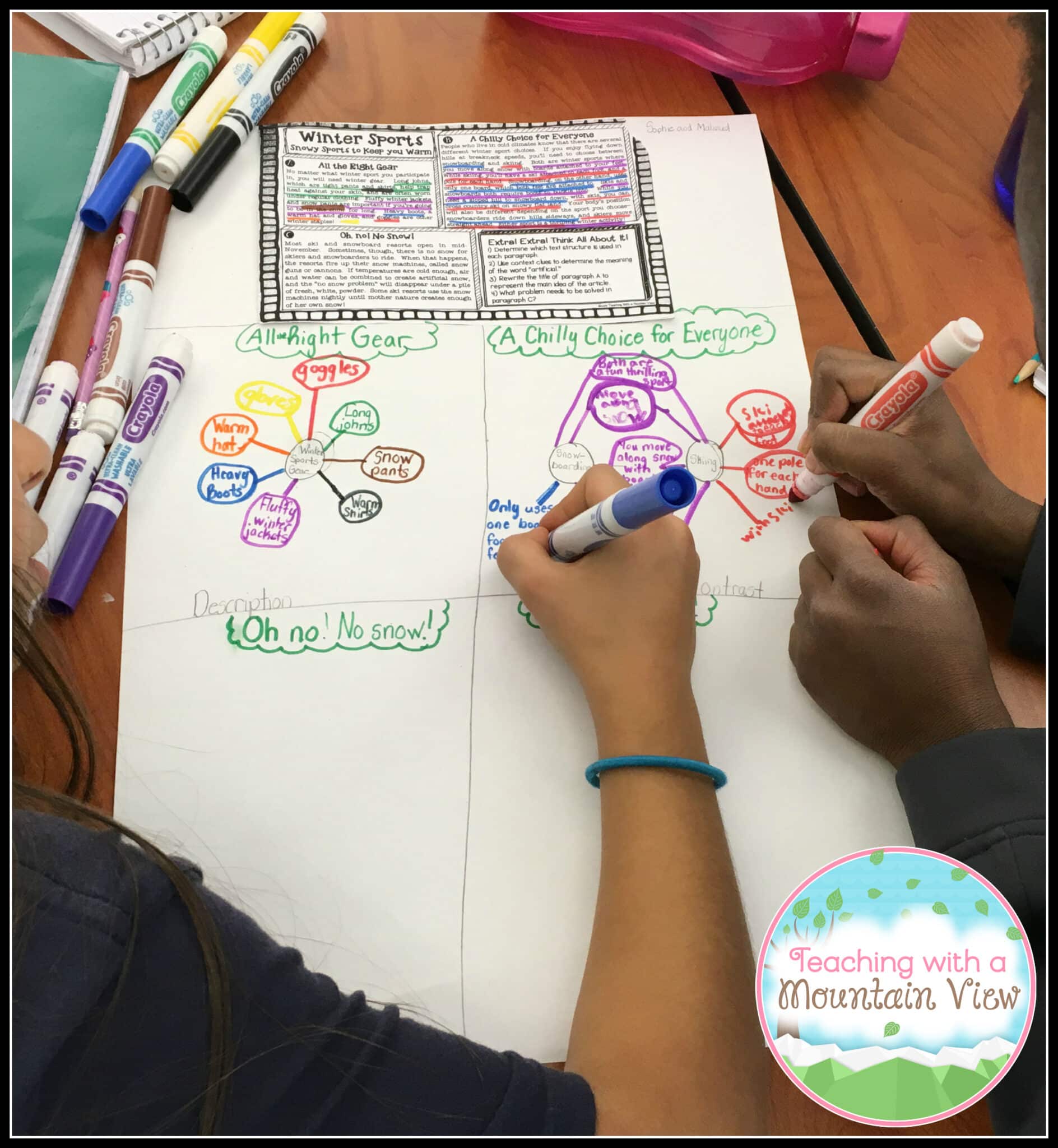
- Topple Blocks: Oh, how we love Topple Blocks! I have created a set of Topple Blocks games for just about every reading and language topic now, and they are SUCH a fun way to do a TON of skill practice in a short amount of time with excellent student buy-in. Bonus: They are super low prep!
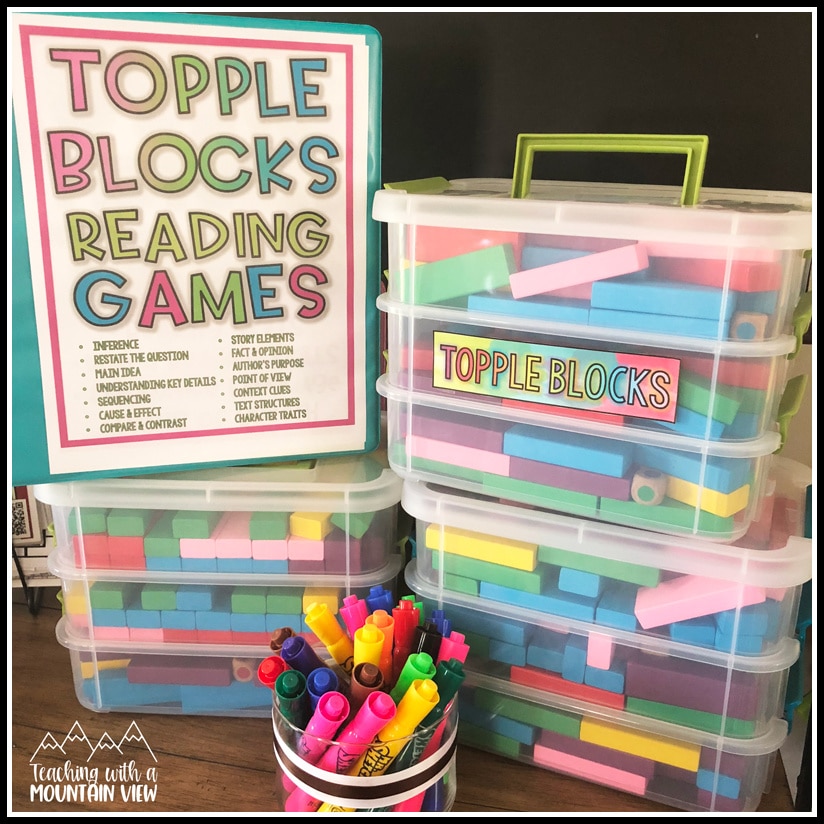
- Extended Projects: I have several projects (like my text structures magazine project HERE or my Amazon Book Review HERE.) that we work on that take quite a long time. Sometimes they will have the same rotation working on the same activity for weeks!
- Reading Projects: I also love to incorporate themed, skill-based reading projects into our independent work time. Sometimes I’m able to make this a whole class activity and do a mini room transformation, but other times I just transform one table to make it extra fun during individual rotations! HERE are all of my skill-based reading projects, including a race-car themed text structures project, a party-themed sequencing project, and more.
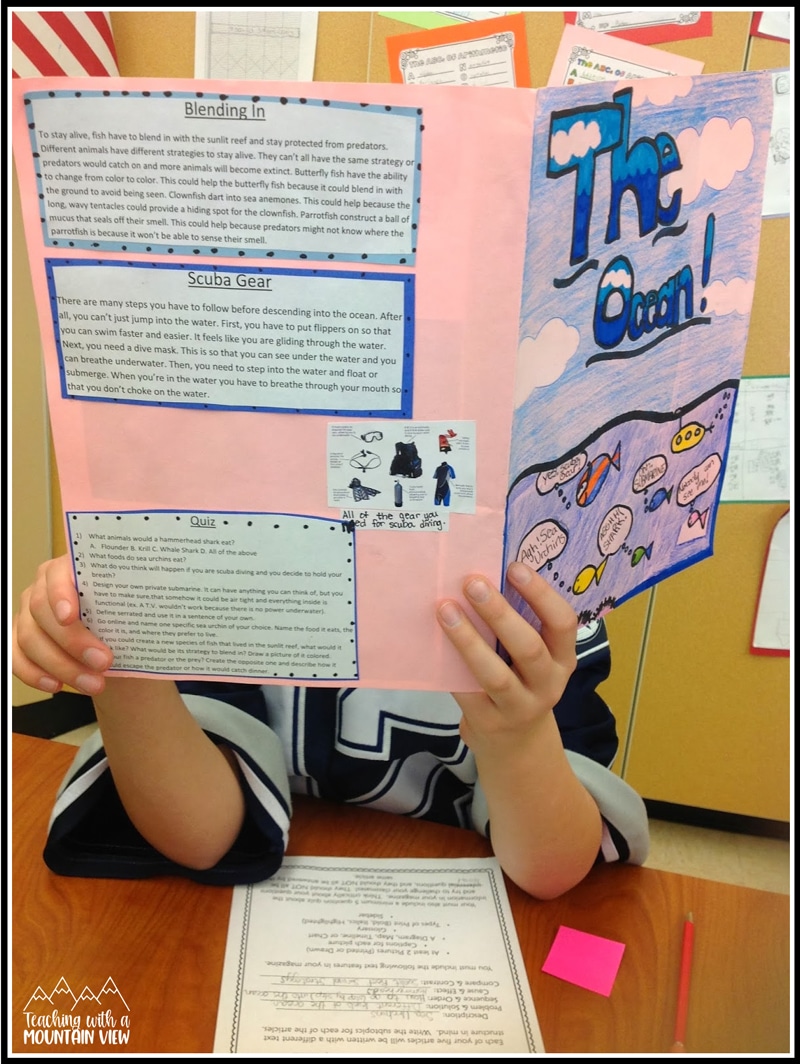
Station #4: Novel Study
I almost always have novel study going on, where most groups are reading different books that relate to our current unit of study. Sometimes I have two rotations that focus on the novel study — one for reading aloud (fluency, as mentioned above), and one for completing comprehension tasks, projects, or discussions associated with it. If you’re looking for tips on choosing books for novel study, pop over to THIS post. My students always have a composition book that they use as a reading journal, where they complete the vast majority of their novel study tasks. Here are some components of my novel study rotation:
- Accountability: I do have students use a reading log during their novel study, but it’s just for accountability. It just says which pages they read that day. That’s it.
- Choice Boards: When I first started doing novel studies, I felt like I had to have elaborate packets of text-specific comprehension questions. However, I am much more comfortable now including student choice. I have THESE free choice boards that students always have in their reading journals, and I recently made these skill-based novel study choice boards that I give students when I want them to focus in on one specific skill with their novel. I also have THESE free choice boards for incorporating writing and vocabulary into your novel study.
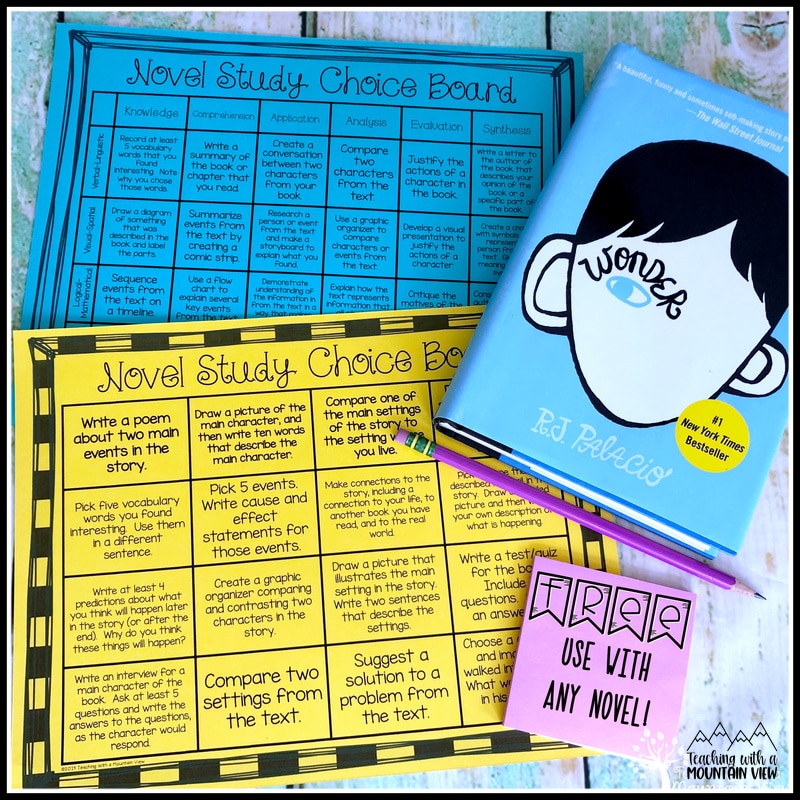
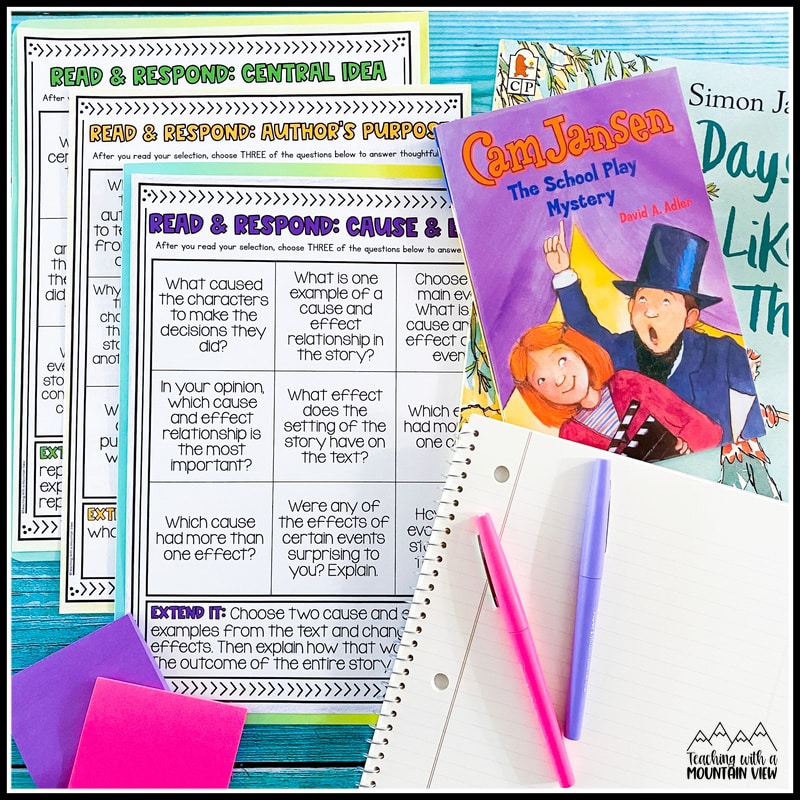
- Literature Circles: I used to use literature circles ALL the time, where each student had a job. This still works for many classrooms, but it took a bit too much time for me when I wanted to include other components in our reading rotations as well. If you're interested in this structure, go for it!
- Accountable Talk: It’s a HUGE deal to me that my students are able to have meaningful conversations about their reading, so I intentionally teach them all about accountable talk and have the stems up for them all year. Before I let them manage these discussions on their own, we do several group lessons modeling it with picture books, and then we do a model discussion during small groups as well.
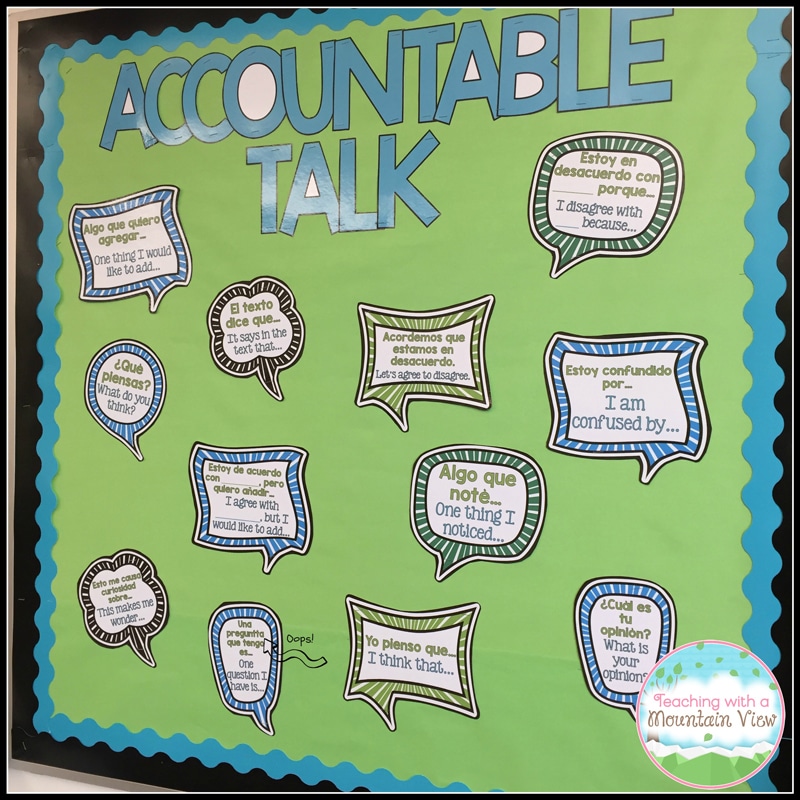
Reading Response Task Cards: This is another must for me! I have multiple sets of reading response task cards all around the room so that they are ready to be used at any time (some years, I make individual sets of mini-cards, laminate them, and put them on in their binders. Students select a few as they are reading their novels and respond to their reading in their reading journals. I always keep a set of these for myself as well so that I always have great questions on hand for small groups! THESE are free open-ended question cards, and THESE are specific reading response task cards.
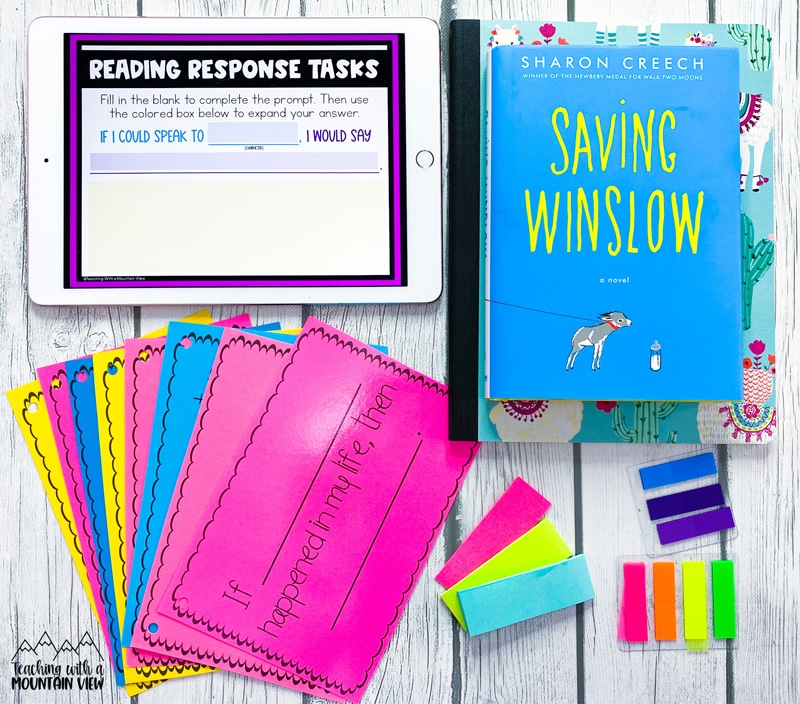
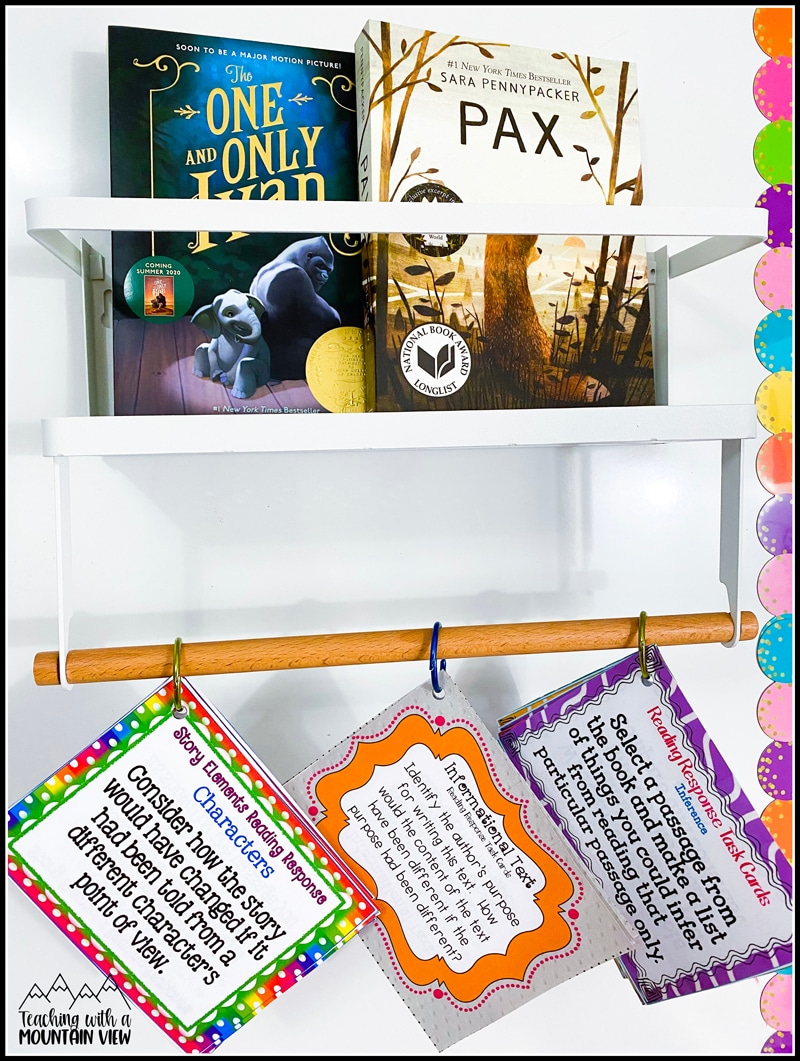
Station #5: Writing and Station #6: Word Work
These stations change daily/weekly for me, truly depending on what word work and writing or grammar skills we are working on. Sometimes they will engage with our mentor sentence for the week, sometimes this is where I have them complete their letter writing to/from me, sometimes they will work on writing prompts. It really varies!
Station #7: Read to Self
This is pretty self-explanatory! I do find a lot of value in choice reading, so I try to fit this in, but if I’m being super honest with myself, it’s definitely not happening EVERY day. If you go this route, make sure your students have access to good-fit books that they love and will stay engaged with. Also, be sure you focus on building reading stamina ahead of time so there isn't a lot of wasted time.
Station #8: Listen to Reading
Don't throw tomatoes, but if I'm being honest this one rarely makes it into my reading rotations in the upper grades. We used to use books on CD or RAZ kids, but in general, I tend to feel like their time is better spent elsewhere, as long as I'm also finding time for read-aloud throughout the day. Now, if I have students who would really benefit from this, I ABSOLUTELY find a way to make it into their rotations!
Enrichment and Early Finishers
Although I typically run my stations with a pretty full schedule, early finishers are bound to happen! When they do happen, it’s likely they won’t have a TON of time until their next rotation, so I try to keep it as easy as possible for them to access their early finisher options. Here are some activities that I have in place for those early finishers during literacy rotations:
- Think it Through: Think It Through is a weekly critical thinking routine to get students writing and responding to quotes and ideas. I always have these on hand for my students to work on!
- Early Finisher Task Cards: I have a specific set of language arts early finisher task cards HERE, and I set it up so that they know exactly how and when to use them!
- Choice Reading: This is especially fun if you don’t have a “Read to Self” rotation!
- Writing Prompts or Journaling: My students love when I put funny pictures or writing prompts up on the board! They keep a journal all year for this type of writing.
To recap, here is a SAMPLE schedule of what my reading rotation block might look like on any given day:
- Daily Routines (20 minutes, if doing them all)
- Whole Group Lesson (20 minutes, Monday & Tuesday)
- Literacy Rotations (80 minutes+/-)
I hope you found a few tips or new ideas for setting up your literacy block!
The post How I Organize My Literacy Block appeared first on Teaching with a Mountain View.

